Eurail Passes are famous as a way to save money while exploring Europe, but they are also confusing and often misunderstood. They are still an amazing money-saving tool for certain types of travelers, and not a wise idea for most others. Before Europe introduced dynamic rail pricing (like airfares, where the price varies depending on when you buy it), a Eurail Pass was an easy way to save money since all tickets had fixed prices that were generally fairly expensive. These days most travelers can save far more money just by buying their train tickets at least a few weeks in advance.
That said, Eurail Passes are still great for longer trips and especially for people who like to make plans as they go. Dynamic rail pricing made advanced tickets much cheaper, but it also made last-minute tickets MUCH more expensive. Below we will discuss Eurail Passes and whether they are a good idea for your trip or not.
Disclosure: This is a reader-supported website and some of the links are affiliate links where a small commission is paid to help keep this site going.
Note: This article was written in 2012 and has been continuously updated since then, so all information is current as of April, 2024.
Eurail 2024 changes: New countries and a mobile version
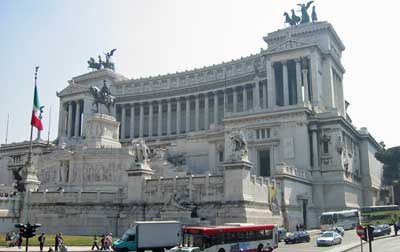
Aside from that it’s just the normal fact that they have updated the timetables as of December 2023 and have a few promotions going on, but those usually don’t happen over the busy summer season.
Eurail passes are now available in a mobile version
Until very recently, Eurail Passes were only available in paper form and they were quite confusing at first. You’d get a pass with a series of empty boxes on it and you’d need to enter your trip before you’d use your pass each day and then have the first conductor verify it. If you lost your ticket (and this was not uncommon), it was a whole ordeal to attempt to get a replacement.
Again in 2024 Eurail offers a fully mobile version that is delivered instantly to your mobile device with no delivery fee. And if you somehow lose your phone, you can resume using your Pass on your replacement with no extra headache. This is MUCH more convenient in every way and as long as you can keep track of your phone you’ll always have your train pass handy.
If your trip will be 2 weeks or less, a Eurail Pass probably won't be worth it
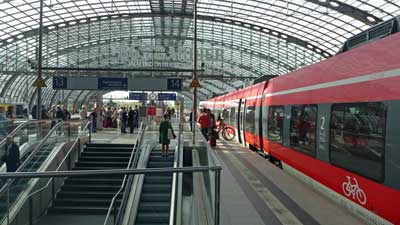
Eurail Passes are ideal for travelers on longer trips, and especially those who don’t want to plan all of their destinations and dates far in advance. If you have your itinerary pretty much planned out and you don’t require much flexibility, you’ll be far better off just locking in your dates and buying your train tickets as early as you can. Again, they can be surprisingly cheap if you buy 2 to 4 months out.
If you are age 27 or younger, a Eurail Pass is probably worth it

With this in mind, if you are lucky enough to still be 27 or younger, you should seriously think about getting a Eurail Global Pass Youth, partly because the sense of freedom instantly gets more expensive at age 28. The age cutoff was 25 until recently, so this change is a great deal for anyone who will be 26 or 27 at the start of their trip.
You aren’t guaranteed to save money by buying a Youth Eurail Pass, but chances are good that you WILL save money and you’ll definitely save a lot of hassle as well. Especially now that Eurail Passes come in a mobile form, it’s even that much more convenient to just hop aboard any train that is about to leave the station and not worry about buying or even having a ticket. Especially for young people, it can be really fun and exhilarating to literally just walk into a train station with your backpack and look at the departure board and then decide where to go at that moment.
If you are age 60 or over, a Eurail Pass could also be great value
Another fairly recent change is that anyone who is 60 years or older at the start of the use of a Eurail Pass now gets 10% off the normal adult fare. That new discount is going to make this a great value for many travelers who might have been on the fence about buying a full-price pass before.
>>>Check prices on Eurail Passes
If you are planning on traveling in 1st Class anyway, a Eurail Pass is probably worth it
Most 2nd Class trains provide similar comfort and legroom to Business Class airline seats, or at least close enough, so for most people it’s not worth the added expense for 1st Class. However, if you are rich or elderly or fear contact with strangers, a 1st Class Eurail Pass is probably worth it no matter what.
Not only do you get much more comfort and legroom in 1st Class, with only 3 seats across instead of 4, but there is another advantage to 1st Class on European trains. Since it’s mostly business travelers and wealthy people traveling in 1st Class, the carriages are almost always mostly empty except in the mornings and late afternoons between large cities. In 2nd Class the only available seats might be two seats in an 8-seat cabin with all the other seats taken up by a loud family or a group of rowdy friends. In 1st Class you are all but guaranteed a peaceful ride, and usually plenty of empty seats from which to choose.
A hidden Eurail Pass benefit: Making extra stops on travel days for free
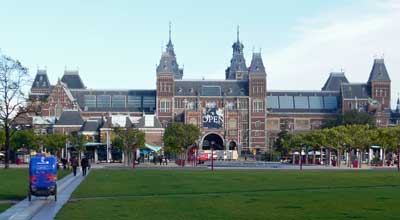
Brussels in particular is one I recommend a short stop in because the small historic center around what they called the Grand Place is amazing and gorgeous, while the rest of the city is rather boring by European standards. With a Eurail Pass you can jump off the train in Brussels and explore the city center for a few hours (luggage storage is cheap and easy) and maybe have lunch, and then hop on a later train to complete your journey to Amsterdam. There are opportunities like this on many if not most trips between larger cities, and if you buy the point-to-point tickets you have to stay on the train you booked.
Another example is the high-speed train between Barcelona and Madrid, which takes about 2.5 to 3 hours in each direction. There are some interesting cities in between, but in this case you could take a morning train from Barcelona to Madrid and then check into your accommodation, and then hop on another train from Madrid to Toledo, which takes about 30 minutes and costs €14 each way. Toledo is a historic and fascinating town, but it’s also pretty small and you can explore the main sights in an afternoon. With a Flexi Eurail Pass where you buy a certain number of travel days, you can save more money by adding on these sorts of nearby stops on travel days.
If you'll be touring major cities within ONE country, a single-country pass might be perfect, and Second Class passes are available for all ages
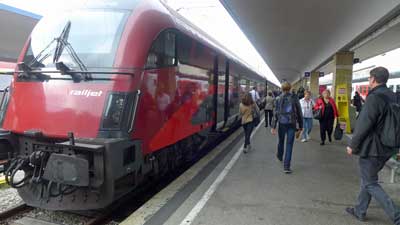
Single-country passes are still available and they MIGHT be good value for you, but it depends on which country and how much traveling you’ll be doing. If you plan on going all over a larger country such as Germany, France, or Spain, and especially if you like to make plans as you go, a Single-country pass for one of those might be your best deal. On the other hand, smaller countries (such as the Netherlands) or countries where train tickets are already fairly cheap (such as Italy) might be harder to get value out of. Long story short, for single-country passes you really need to check fares of the places you plan on going and see how they add up compared to the pass.
>>>Check prices for Single Country Passes
Eurostar (between London and Paris or Brussels or Amsterdam) tickets are now included for Eurail Pass holders for a €30 reservation fee
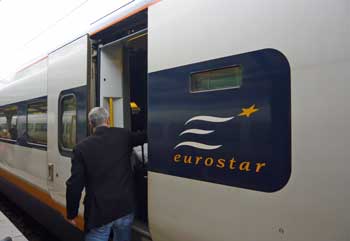
Our recent tests show that Eurostar fares one-way from London to Paris can be as low as €49 if you book about 3 months out, or as expensive as €214 for the same seat if you wait until the day of travel to buy. Round-trip/return tickets can be even cheaper if there is a promotion running.
>>>Check Eurostar prices
If you are on a really low budget, a Eurail Pass isn't a good idea
Here’s the thing. As we’ll discuss below, there are many potential benefits to Eurail Passes, and they will often save you money, but they do cost a lot and they only really save you money when traveling in the more expensive countries.
So let’s say you have a flight to Rome and then US$2,000 to last you a month after you arrive. Buying a Eurail Pass before you go would help you see a lot in that month, but you’d practically need to sleep in parks for your funds to last the whole time. You’d be better off moving slowly in the southern countries, or just in Italy itself, as a way to have the best holiday on your budget. You might also be tempted to use a Eurail Pass mostly on night trains so you can save the cost of a hotel or hostel, but those aren’t ideal for most of us.
The cheapest way to get around Europe by rail is to buy all train tickets online at least a couple months in advance. The fares are low, but they are non-refundable and non-changeable. See how far in advance you should buy train tickets to get those attractive fares.
If more than a little of your travel will be in eastern Europe, a Eurail Pass isn't a good idea
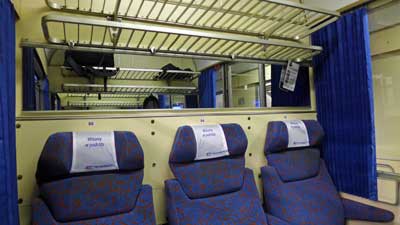
The good news is that the trains operating in this region, and the buses that operate alongside and/or where trains aren’t running, are quite cheap. So if any significant part of your trip will be into this region, a rail pass doesn’t make sense.
Basic types of Eurail Passes
Long gone are the days of the simple options, replaced by specialized passes that are meant to appeal to different styles. It should be pretty easy to figure out which is best for you, and then keep going down the page to decide if it’s worth it at all.
Eurail Global Pass – 4,5, or 7 days within 1 month or 10 days within 2 months
Until recently the minimum number of travel days with 10 days within 2 months, but now you can buy as few as 4 days within 1 month for about €200 to €250 (for first class). This can actually be an interesting strategy if you are planning many shorter and cheaper trips (like within Italy or Eastern Europe), and also 4 or 5 longer trips such as Berlin to Amsterdam. This way you can buy only 4 or 5 travel days and only use them for your most expensive travel days, and just pay as you go or buy cheap advance tickets for your other journeys.
Eurail Global Pass – 15 to 90 consecutive days
This variation allows for unlimited travel on the system for between 15 and 90 total days. They are really only a good idea for people who are certain they are going to travel very often, with much of it being in the north of Europe. The problem with them is that if you really try to get your money’s worth, you will probably ruin your trip by spending too much time on trains in general. On the other hand, if you will be in Europe for 2 or 3 months and plan on traveling around a lot, you can get a LOT of use out of a longer pass. The 3-month pass is around €900 so it’s literally about €10 per day. Imagine going back and forth between Berlin and Munich or Barcelona and Madrid for €10 per day!
One Country Pass
Obviously these are for travel within one country only. Again, they can be great deals if you plan on extensively moving around one particular country.
Where to buy your Eurail Pass
Eurail Passes are cheapest and easiest to buy online, primarily from two main sources which offer all the same products at the exact same prices:
This is a reliable company based in the Netherlands but with fulfillment offices in the US and Ireland. Price of Travel is a partner with this company, and if you use the links of this site we earn a small commission to help keep this site online. Eurail.com is usually cheaper than RailEurope (discussed below) by the way.
They were founded in the 1930s and are based in New York, but owned primarily by the French and Swiss rail companies. They offer free shipping (2 to 3 business days) on all orders of US$399 or more, although now that a mobile version is available, this is meaningless. Price of Travel is a partner with this company, and if you use the links of this site we earn a small commission to help keep this site online.
Reservations on European trains for rail pass holders
For most of the fastest trains between major cities you’ll need to reserve a seat even with a rail pass. It can usually be done just before you leave and the cost is usually around €5. Here’s a full list of which European trains require reservations and which don’t.
Reservations are required on all intercity (longer distance) trains in or involving France, Spain, Switzerland, and Italy. For most trains in Germany, Austria, Netherlands, Belgium, and most of eastern Europe, you can usually find trains that don’t require seat reservations. Often, if you don’t leave until after 9:30am or so, you can ride on any train with no seat reservation, but you have to research each leg to be sure.
How to determine which trains require seat reservations, and also get schedules
You can click on the link just above this section for a list of countries and their seat-reservation policies, but in some cases it’s actually a bit more complicated than that. For example, you can generally ride without a seat reservation on fast ICE (Inter City Express) trains in Germany if you depart after 09:30 in the morning. They do this to free up seats for business travelers who pay full fare, and they don’t mind filling up seats with rail pass holders on trains leaving a bit later.
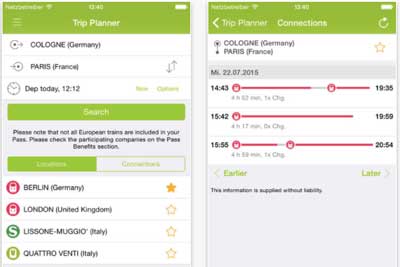
Night trains in Europe are making a comeback
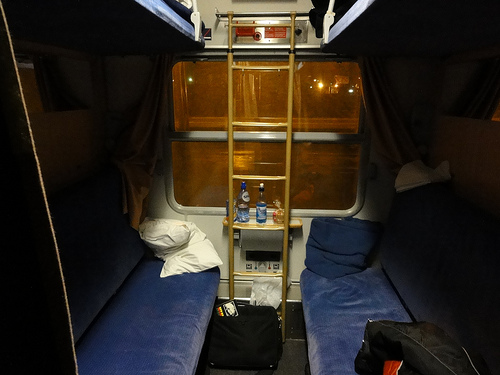
Fast forward to 2024 and night trains are not only expanding service, but they are very trendy. Some of it is nostalgia for the older way of getting around, but most of it is for environmental purposes combined with European hatred for the “low cost airline” experience with RyanAir and Easy Jet etc.
Personally I’m still not a fan of night trains because I find it difficult to sleep on them since they often get decoupled at interim stations in the middle of the night and then coupled onto other trains coming from other places, and I can’t sleep through any of that. But still, they are worth looking into and they are fun to try at least once.
A bit of warning that they tend not to be cheap and even if you have a Eurail Pass you’ll almost certainly want to book a sleeping cabin with a bunk or couchette, and that will come at an extra fee. On the other hand, if you are the sort of person who can sleep sitting upright in a normal seat, then that won’t cost any extra on most overnight trains.
Factors to consider when thinking about any Eurail Pass
Assuming you know which Eurail Saver Pass option is the best one for your type of trip by now, we’ll go over the main factors that should help you decide whether it’s the best idea for you.
Eurail Passes are best for standard ‘medium length’ journeys
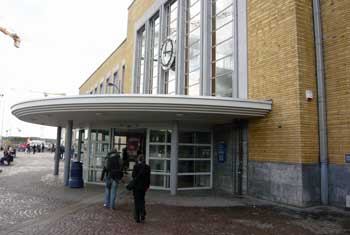
However, if you are determined to travel between Rome and Paris, it’s about a 14-hour journey that will almost certainly be overnight. In this case, a cheap plane ticket is probably better, although taking shorter hops on the train is even better, so spend a day or two in Milan or Lyon on the way instead.
And of course, if you prefer to stop in various small towns between the big ones, then a Eurail Pass won’t pay off, except for the traditional kind for unlimited travel in a given period.
Eurail Passes are better value in northern Europe, France, and Spain, and poor value in Italy
Once you do a bit of research you’ll quickly learn that train tickets (and almost everything else) are much more expensive in Germany, Netherlands, Denmark, Sweden, Norway, and Finland than they are in Greece, Italy, Portugal, and Spain. With this in mind, the regional passes can make sense if you are spending time in the south, but the Global Passes almost certainly won’t. Train tickets in Spain used to be fairly cheap, but in recent years they’ve added new high-speed trains between the major cities, and these are quite expensive.
Unlike most other countries, Italy really subsidizes its train tickets so they are quite reasonable even on travel day, and very cheap if you buy a month or more in advance. For example, you can go between Rome and Florence for around €49 if you buy on travel day, and as little as €19 if you buy well in advance. In most other countries, fares are double or triple that much for similar rides.
So consider your planned itinerary. If more than half of it is in the Mediterranean countries then look into a Regional Pass or just buy tickets as you go, because they tend to be pretty cheap. But if you are planning on spending at least half your time in Paris and places to the north of it, then a Eurail Pass is probably a money saver because those tickets are expensive.
Trains are almost always better than planes
Flying sucks, even in Europe
Until you’ve experienced the joy of traveling around Europe by train you might be tempted to “maximize” your time by flying low-cost airlines between each city. This would be a mistake. In order to get truly cheap airfares you have to purchase long in advance, buying non-refundable tickets. You might also have to commit to flights in the very early morning or in the late evening, because cheap tickets on convenient flights sell out quickly.
And again, most European airports are around an hour outside of the city. They are often on the main train lines, which helps, but still you have to deal with the madness of security and also try to get there at least two hours early. From one city center to any other city center it’s about 5 hours minimum, even if they are close, and those are pretty miserable hours.
Train travel is a positive experience

Not only are all the seats comfortable on trains, but you also have an interesting view most of the time. Better still, trains deposit you in the heart of every city, which is usually the neighborhood with the cheapest hotels and food. It’s a wonderful feeling to step off a relaxing train ride, buy a hot dog or sandwich at a local shop, and then be in your hotel room only about 10 minutes later.
Eurail Passes are better than train tickets alone
As someone who enjoys the process of crunching numbers and looking for value, I have to also mention that I’d buy a Eurail Pass even if it seemed like it would cost a bit more than the individual tickets. With a pass you get an extra element of freedom that is worth a lot more than you might expect until you’ve used one.
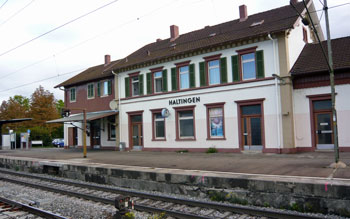
Let’s say you are heading from Amsterdam to Hamburg tomorrow morning. The 09:00 train you planned for might seem a bit ambitious after a long night out, so you can instead opt for the 10:00 or 11:00 train. As long as you walk into Centraal Station 10 or so minutes before departure, you are on. If you are flying you can’t change your ticket, and if you are buying train tickets as you go you have to be in line at the international desk at the train station at least 30 minutes early, and even then you might miss it if they are busy.
Freedom and getting to feel like a big shot
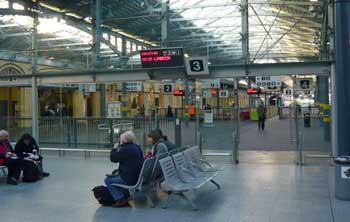
Let’s say you are staying at a hostel in Brussels, and two groups of new friends suggest that you go along with them to their next stops. One group is going to Bruges, which is a short and cheap journey, so you can join them by buying individual tickets (unless you have the unlimited pass, making it free). Then you restart your trip from Bruges, on to your next destination. The other group is headed to Berlin on a night train, which is long and expensive, but with a Eurail Pass you don’t even have to think about the cost. On you go, just like a rich person.
Buying a Eurail Pass is great for those who might run out of money
We all know people who keep meticulous track of every penny they spend, and who are always putting money away for a rainy day. And we all know people who can take a US$100 “entertainment fund” and burn through almost all of it in just a few hours. For the first type of person, a Eurail Pass can help you keep track of expenses, but it’s really the second type of person these are best for.
It’s sad to hear about people who have big plans to see their dream destinations, but they run out of money for transportation halfway into the trip, so they have to just stay put until they fly home. It happens. Locking in your major transportation costs before you leave home, and probably saving money in the process, is a wise move for anyone who isn’t as disciplined as they’d like with their money.
>>>Check prices on Eurail Passes
Bottom line: If you want to keep travel costs down, your choices will usually be a Eurail Pass or buying tickets at least a month or more early
In the last few years, almost every long-distance train ride in Europe has switched to a pricing system similar to low-cost airlines. In other words, tickets go on sale 2 to 6 months ahead of time at very low prices, and they keep getting more expensive as the train fills up and the date approaches. For most trips where a rail pass is possible, this is how things stack up:
Cheapest possible way: Buy advanced (non-refundable, non-changeable) train tickets at least 30 days in advance
Next cheapest way: Buy a Eurail Pass and make seat reservations as you go, usually only a day or less in advance.
Most expensive way: Buy train tickets as you go, or less than a week in advance.
Thinking about it this way should make the choice a bit easier. If you are the type who likes to plan each day and travel segment long before you even leave home, then buy tickets online for the best prices. This can be the best strategy for most shorter trips (10 days or less) because you simply don’t have enough time to change many things as you go anyway.
Buying a Eurail Pass won’t be quite as cheap, but you are buying a LOT of flexibility with the extra money. If you dream of making up your plans as you go, or even making up your plans just a few days in advance, this is almost always your best bet.
But if you wait too long, and just show up looking to buy train tickets as you go, they are going to cost a fortune. As recently as only a few years ago all seats would be the same price on many rail systems, so you could always just wing it. When each country computerized its rail systems so they can sell advanced tickets cheaper, they also had to keep track of seat reservations, so the whole pricing structure had changed to favor advanced ticket buyers and rail pass holders over those who’d prefer to just hop on any train as it is leaving the station.
Have a rail pass or itinerary question of your own?
It wasn’t planned but scores of people began asking me rail pass and itinerary questions at the bottom of this article and a few others. I’m happy to keep answering them and now I’m trying to organize them better as well so they are easier for other people to find.
If you have a question about specific types of European rail passes, please ask it in the comments below.
But if you have a question more about a European itinerary or other non-rail-pass questions, please click over to the European itineraries Q & A article and ask in the comments of that one.

Roger-
My 2/3 friends and I are planning a 15, maybe 20, day standard backpacking trip (aka hostels, $100 days, picnic meals, etc)to Europe June 2016 after we graduate. 3 of us are 18 y/o and 1 is 17 y/o and we will always be traveling together. We are planning to fly in and out of Amsterdam (one of the girls is from there but now we all live in the US) and from there: AMS to BRU to PAR to GVA to MUC to PRG back to AMS (which we are hoping for a night train for the experience), with a couple international and domestic day trips in between (Salzburg, Interlaken, etc?)… pretty darn busy, fast travel.
I was under the impression that if we bought a 15 day Global pass for 15 days we would have unlimited train access and free train trips within country borders (not internationally). Is that the right type to get? Would you even suggest a Eurail pass? If its an extra $150 or so for the freedom and flexibility for day trips, I would say that is worth it for us. We want to see as much as we can while we are there, together. Also, anything in our rough itinerary that you suggest we drop/keep/add? We would love input from anyone at this point. We still have a long time before we have to solidify and make final decisions.
Any advice? This is our first time traveling in this way and traveling alone but we are all very used to and comfortable traveling around Europe.
Thank you so much for your post, gave me a lot to think about.
-Lydia and friends
Lydia,
First off, I feel obligated to at least mention that I normally recommend 3 nights in larger cities and at least 2 nights in smaller ones. In anything less than that you’ll be racing around just to see the top couple of highlights before you are off again. That said, “fast travel” can also be fun, especially for younger people who aren’t yet burned out on some of the drudgeries that come with it.
If you are referring to the 15-day continuous Global Eurail Pass, then it IS actually valid for unlimited train travel all over Europe, regardless of borders. So you could do day trips every day if you like and they would all be included (with a few exceptions like the private scenic trains in Switzerland). However, there are some restrictions in France and you usually need to pay €20 to €30 for a seat reservation on the popular intercity routes. Also, they have quotas on those seat reservations so if you wait until just before the train leaves you might discover that all of the rail-pass seats are gone so you’d have to pay full price, which can be a fortune. Outside of France you usually don’t even need seat reservations (where you’ll be going) as long as you don’t leave in the morning rush hour. Even if you do need them they are usually around €5 each outside of France and Italy, and can be bought just before you leave.
So if your group wanted to blast through as many cool European cities as possible during 15 days, the continuous Global Pass would be perfect. I should also mention that Eurail Passes are only available to non-EU residents and you have to show your passport every time you use it. If your Dutch friend has a European passport she would need to get an Interrail Pass. Those are similar and can actually be cheaper, but they come with restrictions and are only available to EU citizens.
The only other option would be paying for train trips individually. If you bought them all close to 3 months in advance (non-refundable, non-changeable) they can actually be pretty cheap, but if you wait until just before departure they can be insanely expensive. The other rail pass to consider would be a 5-days or 10-days within 2 months Global Pass. Those would only be good if you wanted to limit travel days (for the 5-day one) or do more travel days and go slower (for the 10-day one). Those are the ones I usually get because you don’t feel so rushed. I can help you make that decision as your trip draws closer.
As for your itinerary, it’s obviously a personal decision, but that won’t stop me from offering a few opinions per your request.
Amsterdam is awesome and well suited to younger people, but Brussels is kind of a dud by comparison. It’s quite expensive, more formal, and there are really only a few interesting sights, all clustered near the incredible city square (Grand Place). I’d recommend Bruges instead, although it looks quite a bit like Amsterdam so you might be best off skipping Belgium this time.
Instead I’d highly recommend Berlin, which is another fantastic place for younger people because there is so much going on and it’s reasonably cheap. After that you could easily reach Prague, which is another winner for the younger set, and also fairly cheap. After that you could head to Munich, which is an impressive place but maybe not quite as fun as the others on the list. From Munich you might consider a stop in Salzburg, which is one of my favorite cities in Europe. The dramatic location at the base of the Alps would really be a novelty at that point in your trip.
After Munich and/or Salzburg, assuming you want to see something in Switzerland, you want to go to either Interlaken or Lucerne or both. Geneva is a real dud for tourists, and the other big cities in Switzerland are only a bit better. Bern is the most interesting of them, but really the magic of Switzerland is the outdoors and views, and Interlaken and Lucerne are both perfect for that. You can read more about this in my recent article in where to go in Switzerland.
After Switzerland you are close to Paris and you’ll definitely want to go there. Again, get your seat reservation for going into and out of France as early as possible and your Eurail Pass will work great.
From Paris the high-speed train to Amsterdam only takes about 3 hours, although the seat reservation is pricey on that one as well because it’s one of France’s premium rail services (the Thalys).
By the way, night trains can be a good way of going a long distance in one shot, but you won’t be missing much if you don’t include one. As I explain in that linked article, they are becoming more rare and aren’t really as fun as you might think. For your age group they could be a worthwhile experience, however, and in 10 years you’ll want no part of that if you can avoid it.
Hopefully this helps. Either way, feel free to keep in touch if you have more questions. I’m sure it’ll be an amazing trip, even if it all doesn’t go as smoothly as it could. -Roger
Roger,
Thank you so much for your amazing reply, it’s very helpful to us. In reply to that written about Switzerland, thats helpful as well. We are United Nations enthusiasts and would love to see the Palace in Geneva but understood that there may not be much else there. Do you think it would be feasible to make a day trip from Interlaken to Geneva to take a tour and the UN?
Onto Berlin… what is the arts/culture/history side like opposed to the club/night life? We are not real clubbing, partying type youth and gravitate more towards the intellectual, historical, and beautiful :). On that note, Salzburg seems like a must.
Thanks so much for your input and thought. I’m sure I will be talking to you in the future when the trip gets closer. I’m sure it will be a great trip regardless of what we see and at what speed! Just being there is the goal.
-Lydia
Lydia,
Interlaken to Geneva is about 3 hours by train so it’s kind of a long way to do as a normal day trip. On the other hand, that is also the best segment in what is known as the Golden Pass scenic rail journey. I’ve done it myself and can confirm that it’s really nice, although part of it had to be done by bus as of late last year. Another possibility would be to stop in Geneva on your way from Interlaken to Paris, either for part of the day or for a night.
Berlin is sort of known for its nightlife, but it’s not really a “party city” like many others in Europe. The most interesting thing (for many of us) about Berlin is that the huge “former East” part of town became cheaply available to all sorts of new businesses, shops, galleries, and you name it. As a result, Berlin has become a huge magnet for creative people from all over Europe and all over the world. It’s just a really cool place that pretty much everyone seems to love once they experience it. The city also has its big share of history to go along with the culture, even though most of the city center has been rebuilt since WWII, which is actually true of most large European cities.
I’m sure you will have a great trip and it’s interesting to hear about your more cultural and historical focus. Feel free to keep in touch. -Roger
Dear Roger,
Thanks a lot for your help and quick reply, the information that you gave is very useful to us and we have just confirmed the air ticket after reading your answer!
Thanks again. Good blog, Keep going. May God bless you.
nick
Hi, Roger,
I am from Singapore and very impressed by your prompt answer and respond.
My friend and I are planning a 30 days trip to Europe in November-December 2015. I Would like to seek your opinion which pass is most suitable for us, our planning are (in order)
(10 days in Switzerland) Zurich – Luzern – Zermatt – Bern –
(10 days in French) Arles – Dijon – Paris –
(10 days in UK) London – Scotland – Norttingham – Cambridge – London
Do we need to buy Britrail pass or just travelling by local bus when we are in UK?
Any advice would be greatly, greatly appreciated!
Nick,
Most likely, a pass won’t be good value for you on this trip. In Switzerland the distances are fairly short and the tickets are the same price no matter when you buy them, so just paying as you go won’t cost too much. However, you should look into the various Swiss Pass options because one might work for you. Some of them include the private scenic trains in the Alps, plus the cable cars, and those things are expensive if purchased separately.
In France, the rail passes still require travelers to pay for expensive seat reservations on the high-speed routes. As a result, rail passes aren’t ideal for trips with many legs within France. You are best off just buying your tickets online as far in advance as you can (from the official France Rail website).
Then of course you’ll need to take the Eurostar from Paris to London, and it isn’t part of any rail passes, although you can get a 25% discount with some.
Once in Britain it gets even more confusing. Britrail Passes are kind of a rip-off, unless you are planning on criss-crossing the island several times within a short period. The confusing part is that train fares in Britain can be very cheap if you buy them online at least a week or two in advance, and insanely expensive if you buy as you go. For a trip like London to Edinburgh, it could be £15 if you buy in advance or £150 if you buy on departure day, and that’s each way. You’ll be there when there are few other tourists, so you might have an easier time getting good deals, but it’s still worth researching in advance.
This is my favorite site for checking British rail fares.
Then, as you suggest, there are also long-distance bus services in Britain, which are almost always cheaper than trains. They are usually slower and with more limited schedules, but good as a back-up if the train tickets are too expensive. They even go all the way up to Inverness in Scotland, which is the place to see the Highlands and the best scenery (although skip the Lochness Monster stuff nearby).
This should help but let me know if you have other questions. -Roger
I want to purchase 15 days continuoes global pass. please guide me from where i will purchase same.can i will be able to purchase it from Munich airport? How much time it will take to activate.?
i want to buy Global pass in Munich airport & take the train after 2 hours for Zurich. Is it possible.
Your early response is required,because i reached munich on 12th morning.
Thanks in advance.
Navdeep,
Eurail Passes are meant to be ordered before you get to Europe, mostly because the train companies don’t want to have those discounts competing with the expensive train tickets in Europe. But I’ve heard that a limited number of rail passes ARE available within Europe. You might be able to buy one at the DB (Deutsche Bahn) office in the Munich Airport. If not, take the train to the main train station and you can probably buy one there at the DB office or the Euraide Office. Good luck. -Roger
Hi Roger,
I love your website and it is truly the best of its kind! I carefully read many of your posts and replies and I appreciate the depth and length you have gone in helping people planning their trips!
I myself have a Euro trip coming up and would like to pick your brain about my itinerary and transportation options. So far the only thing we have planned is the flights (fly into and out of Frankfurt). We are thinking:
Germany (Stuggart and neighboring areas): 4 days (to visit family)
Southern France (Nice): 2 days
Florence: 1 day
Rome: 4 days
Frankfurt: 1 day to catch flight
I am wonder what transportation options do you recommend to go between those places. We look up the train from Rome to Frankfurt — it is long and not cheap. Based on your post, I guess getting a Eurail pass may not be worth it for us.
I am also wondering if you would suggest to take Southern France out of the itinerary. We are still debating whether we should just make it a entirely Germany-Italy trip. If so, what other places you would suggest to visit in Italy instead? Do you think we can make day trips to Florence and other parts of Italy and use Rome as a home base during our time in Italy?
Thanks so much!!!
Shi,
Thank you for the kind words and I’ll be happy to try to help. I’m a big fan of Nice, but in your case it’s quite out of the way so I don’t think it works well in this trip. Also, I’m not sure when you are going, but Nice will be packed and very expensive in July and August, so those are not good months for a first visit.
So I’d recommend flying from Frankfurt to Rome and spend 3 or 4 nights there. Then take a short train ride to Florence for 2 or 3 nights and then another short train ride to Venice for 1 or 2 nights. Those are the “Big 3” in Italy for a good reason. From Venice, or nearby Treviso Airport, you can fly back to Frankfurt. You could potentially take a train on that route, and the scenery through the Alps is fantastic, but the train is probably more expensive than a flight and it takes 12 hours, which is a long time to spend on trains in a day.
Rome is packed with important and amazing sights, but it’s also kind of chaotic and stressful, and the hotels are expensive, so I wouldn’t use it as a base. Florence is more pleasant and a bit cheaper. You can read my detailed advice on all of this on my article about where to go in Italy and France.
If you have more questions feel free to follow up. Have a great trip. -Roger
Thank you so much! I just knew from your website you’d be up for the challenge. ? It’s been harrowing enough for me to schedule the planes and find lodging. The train system threw me into complete confusion.
So a few more questions, thoughts…we might travel for one day within the Netherlands, so not sure how that changes things.
The boys might travel by train from Spain thru France to get to London, we’re trying to pin them down now. They fly home from London on 8.20.15.
From Amsterdam we want to take the regional trains to go thru the Rhine valley, and maybe even hop onto a boat and/or eat lunch in Koblenz. I know that will add time, and train tickets, but we are prepared for an entire day on the train, as long as we have good scenery. I was hoping if we get started around 7.00AM from Amsterdam, we could still get to Lucerne before dark (9.00PM), what do you think?
Or maybe we should ditch the German scenery and take the night train from Amsterdam to Lucerne, giving ourselves an extra day in Switzerland?
So you brought up a good point that I hadn’t really considered about me having the global pass and everyone else buying tix as they go. Since we are talking 4 youth and they get the cheaper 2nd class price, I was leaning towards doing passes for them, esp. to avoid the nightmare of having to pin everyone down and buy all these tix in advance. But I realize we would still have to make reservations for some of the trains. Also, I assume even though I would have a 1st class ticket that I could sit in 2nd class with them if I want?
If it’s ok, I will send more details as soon as I pin down the boys.
Thank you again for your quick and very helpful response!
Lisa
Lisa,
If I were you I’d save the Rhine for another trip. It’s a really interesting area, particularly if you have time to visit one or more of the many castles that overlook the river and used to charge tolls for boats. The problem is that the scenic trains are the milk-run trains that take hours to cover small areas. It would be a brutally long day and you still wouldn’t have time to really appreciate the area. The extra day in Switzerland will be far more enjoyable.
Yes, with a 1st Class rail pass you can sit in 2nd Class. And as long as you leave after 9am or so each day, you won’t need seat reservations on most of your route. Those are only mandatory on the high-speed trains in France, Italy, and Spain for the most part.
Feel free to keep following up. -Roger
We are planning a somewhat complex trip with 7 people. Four of us (2 adults and 2 youths) fly into Paris for 3 nights then we meet two others (2 more youths) in Brussels and move on to Amsterdam for 4 nights.
We want to go from Amsterdam down the Rhine river to lucerne in one day.
Then spend 3 nights in Lucerne, traveling some in Switzerland.
From Switzerland we want to go possibly by the Bernia Express to Lake Como and on to Bologna for 5 nights. we will use bologna as a base and travel within italy by train to venice and florence. After that, an adult and youth will fly home on 8.6.
Three of the youth will continue on to possibly spain and then end up in London.
I will travel to Salzburg and possibly Prague and then fly? to Copenhagen where I meet another adult friend. We plan to spend 10 days in Denmark , Sweden and Norway and do Norway in a nutshell. So I have several questions.
Would it make sense to buy a 4 country pass for the adult and youth who go home on 8.6 for Benelux, Germany, Switzerland and Italy? Or would we be better off just trying to find individual tickets for the German and Italian sections and then buy a Swiss Pass?
What if we want flexibility and dont want to be locked into specific departure locations and times?
With all the travel 3 of the youth are doing, would they be better off with a pass of some sort?
What about my leg in scandanavia? I thought there was a special scandanavia pass , but maybe that’s no longer available. Maybe i would be better off with a full blown european pass?
Also if we can only do one scenic train trip through Switzerland would you recommend the William Tell, the Glacier Express or the Bernia Express? We will be staying in Lucerne so we’d want to see as much of the Alps as we can on our train trip between Lucerne and Italy.
I arrive in europe on 7.22 and return to the U.S. on 8.20.
Any advice would be greatly, greatly appreciated.
Lisa,
This might be the most complicated set of questions I’ve ever been asked, but I’m up for the challenge. 🙂
First off, Amsterdam to Lucerne takes 8 hours 30 minutes on a train, and you’ll only see a few glimpses of the Rhine, just in case that makes a difference.
I don’t think a 4-country pass would be good value in this case. It looks like you’d only plan on Brussels to Amsterdam and then Amsterdam to Lucerne as the major legs. In both cases, if you buy your tickets online in advance, they will be fairly inexpensive. Then when you get to Switzerland, the individual tickets are reasonable as well, mostly because the distances are mostly short, and they don’t raise prices as the travel date nears. In Italy the individual tickets are also fairly cheap, even at the last minute. In all cases I’d just buy them online as far in advance as you are able, and I’m pretty sure you’ll spend less money than with a rail pass.
The rail pass DOES give you that flexibility though, so if you think you might want to make plans as you go, then paying more for the rail pass could be worth it. The most expensive option would be to buy each ticket just before departure, so you don’t want to do that.
It’s pretty much the same story for the 3 youth who might also be going to Spain. They’d need a Global Eurail Pass to cover all of those countries (which ISN’T valid in England or getting to England), and that would be expensive. From Italy to Spain it’s probably best to fly because the train takes most of a whole day going across France. Once in Spain, the train tickets on the high-speed trains that connect the major cities can be expensive at the last minute, but reasonable if bought in advance. It’s hard for me to give you a confident answer without seeing the proposed itinerary as more of a list, but my best guess is that a rail pass would not be good value for this. And of course from Spain they’d want to fly to England, and buy any train tickets for England in advance. The Britrail program is terrible value in general.
For Scandinavia, it looks like they only do 2-country passes now, and a Sweden-Norway one could work well for you. You’d have to pay to get to Copenhagen, but then it’s cheap to get to Malmo, Sweden, just over the bridge. From there the pass would cover your rides in Sweden and Norway. On the other hand, the Norway in a Nutshell journeys also include a boat ride and bus rides, and I don’t think those are covered in the pass (though I could be wrong). And again, Norway and Sweden have these bargain fares called “minipris” that are very cheap if you buy them far enough in advance. Not to sound like a broken record, but it comes down to how far in advance you are comfortably able to book your train tickets, compared to how much last-minute freedom you might prefer. The advance tickets will usually be cheaper, but the freedom to just hop on trains is worth a lot to many of us (and it’s the way I usually go).
You personally might do well with a Global Rail Pass (probably 10 days in 2 months), and that would give you all of the flexibility. Except it might not if you have to coordinate many of your rides with others who don’t have rail passes and have to buy in advance. I’ll be happy to try to help you sort this out more if you have a specific follow up question with the remaining details.
As for Switzerland, I’ve done a few of the famous “scenic” train journeys, and to me they seem like mostly a marketing gimmick. What I really mean is that almost every train ride in Switzerland (particularly those in or near the Alps) is incredibly scenic and lovely. So what I’d recommend is to take the trains to go between the places you want to visit, and enjoy the views as you go. I don’t think it’s worth it to go 5 hours out of your way just to ride a particular train. I say this partly because you’ll be getting some incredible views going between Switzerland and Italy, whichever route you take.
And as nice as Lucerne is, it’s not in the Alps, and the best views and close-up looks are in the area just above Interlaken. If you spend 1 or 2 nights in Gimmelwald or Murren, as described in this article about where to go in Switzerland, you’ll be overloaded with gorgeous mountain scenery.
I’m guessing I didn’t answer everything, so feel free to follow up with other questions if you have them. This is going to be an epic trip and I wish I were joining you guys. -Roger
Hi Roger,
I will be taking a trip in a little over a month. I am flying into Madrid for 4 days, taking train to Barcelona, Staying there for 5 days then taking train to Paris for a week. I feel like Paris for a week is a little longer than I really care to be there. I am wondering If instead of direct train tickets I get the Euro Rail 4 Countries option and I add Amsterdam and Germany even for just a day each to explore. If that does not sound reasonable what website do I use to purchase tickets for the 2 trains I need right now?
Thanks ahead of time.
Jesse,
A full week in Paris is longer than most first-time visitors spend there. But there aren’t many other cities in the world where a week is so easily filled with top sights and attractions. You can obviously go to Versailles for most of a day, and there are many other worthwhile places within 2 hours of Paris by train.
For your other option, I don’t think I’d bother going to Amsterdam for fewer than 2 nights. You’d be too disoriented to enjoy a visit where you arrive in the afternoon and leave the following morning. And the two most interesting cities in Germany are Berlin and Munich, and unfortunately both of them are quite a long way from Paris. It would be better to instead consider Bruges and/or Brussels and also Luxembourg City, which are all on the fast train lines close to Paris.
As for the 4-country Select Pass, it’s not a great choice when you are going in and out of France like that. Weirdly enough, to use it in France you have to buy seat reservations that can average around €30 each and are available in limited quantities. If you buy train tickets at least a few weeks in advance, they aren’t much more expensive than that, and they include the seat reservation.
I’ll be happy to help you sort out some possible side trips or an itinerary for Amsterdam and such. However you do it, it’s probably best to buy your train tickets in advance on these official websites.
I planning to go Zurich, London and Amsterdam in 15days, what pass should I buy?
Chloebbcc,
That isn’t enough information to give you a confident and complete answer, but if those are your main stops then a rail pass probably isn’t a good idea. The smallest number of days for a rail pass is 5, so you probably won’t need that many going from Zurich to Amsterdam. Then to get from Amsterdam to London you’ll need to take the Eurostar, which isn’t affiliated with any rail passes. Best of luck and let me know if you have more questions and can provide more details. -Roger
Hi Roger,
Thanks for your information, Zurich would be my first stop, then I will been to London by Easyjet, then Eurostar to Amsterdam, so just need to buy the local travel pass of the Cities is ok ?
Chloebbcc,
So a rail pass is definitely overkill for this trip, and all you need to do is buy the individual tickets as early as possible for the lowest fares. And if you are wondering about travel passes within these cities, you won’t need one in Zurich or Amsterdam because you can pretty much walk everywhere. In London it’s best to just buy an Oyster Card for £5 and then buy enough credit for the trips you want to take. After about 3 or 4 trips in one day you reach the maximum for that day, and after that all additional rides are free. Have a great trip. -Roger
Hi Roger,
A friend and I are traveling Europe (staying in hostels as much as possible)…college students on a budget.
We are going July 1 and returning August 2nd. We fly into Rome and return home from London.
We are going from Rome to Venice, Venice to Pamplona (running of the bulls), then Paris (Bastille Day), then we’d like to to go to Amsterdam, maybe Belgium & Germany, then onto London, then home.
We are very confused about the rail passes and what transportation inside each country, etc. I think I read that the pass is not a good idea to use in Italy because their rail system is cheaper, but do we use it to go from Italy to France? So much info but never been so have no clue.
We are only 1 month away and didn’t really want to plan day to day as people said to get there and wing it and enjoy. However, now we are finding out that some things need to be booked ahead….please help.
Appreciate your time,
To clarify my message above, I am actually planning to go from Venice to Pamplona. Is that feasible? Straight trip or make a stop? I don’t mind sleeping on a train but this is all new to me so I’m not sure if there are 15 stops or how it works.
Thanks again,
Brandon
I understand your confusion and frustration. Only about 10 years ago you could pretty much fly into Europe and then take trains on a whim, but since then all countries (except Switzerland) have changed the pricing system to make it similar to budget airlines. In other words, the train tickets are quite cheap when they first go on sale 3 or 4 months out, and the price keeps going up as more seats are sold. As a result, the only two cheap options are buying train tickets weeks or months in advance (which removes the spontaneity) or buy a Eurail Pass and lock in a reasonable price that also allows you to go pretty much when you want with little notice.
First off, it’s true that train tickets within Italy are fairly cheap (due to government subsidies) so it’s probably not worth using a rail pass to go between the major tourist cities like Rome to Venice. Next, a train from Venice to Pamplona takes a minimum of 26 hours and requires at least 3 train changes. In other words, you are going to want to fly from Venice to Bilbao or maybe Barcelona, and then take a train or bus from there. There are many high-speed trains in Italy, France, and Spain, but unfortunately none of them are part of this route. You can fly it nonstop for around US$100 one-way if you book early enough.
Once you are done being chased by the bulls, you might be best off with a rail pass for the rest of your journey, although it depends on how many stops you’d do and how far apart they are. A Eurail Pass can be very helpful and good value in Spain, France, Germany, and the Benelux area. To get to London you’ll need to take the Eurostar, which can be discounted if you have a Eurail Pass, but is otherwise a separate system.
Basically, if you are going mostly in a straight line from Barcelona to Amsterdam, via Paris, then a rail pass probably won’t pay off, partly because trains in and out of France require a seat reservation of around €30 to ride the high-speed trains with a Eurail Pass, and it’s hard to avoid those on your route. But if you want to go from Pamplona to Madrid to Barcelona to Paris to Berlin to Amsterdam to Brussels and then to London, some version of a rail pass might make sense. Again, the main thing to consider is that last-minute train tickets in those countries tend to be very expensive (often more than €100 per segment), and if you buy a rail pass with a per-day price of, say, €60 or €70, then it can save you money AND allow you to make plans as you go. Otherwise, you’ll probably want to buy each train ticket in advance as early as you can for the best price.
It’s also worth mentioning that each departure has its own fare. So let’s say the Berlin to Amsterdam train at 9am might show a fare of €85 right now for tomorrow, but the 1pm (13:00) train might still only be €60. So you can often still find reasonably priced tickets shortly before departure, but it will always be at undesirable times. Best of luck and let me know if you have more questions. -Roger